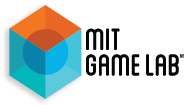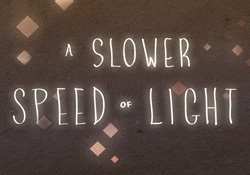Games
The games available on this page were all created by students and staff of the MIT Game Lab and for research purposes. These games are short, 5-15 minute experiences, each made as a vertical slice of gameplay.
Find out how these games were made and how they’re used by our researchers!
“Promesa”
in progress | Counter-colonialist Game Design
Through workshops held as part of the Games & Colonialism research project, MIT Game Lab researcher Mikael Jakobsson and his collaborators are designing a counter colonialist board game to establish networks for social impact through creative practices. Most contemporary board and card games set in Puerto Rico depict the island during the European colonialist era. The narrative of European colonialism is told over and over again in an inaccurate and “whitewashed” manner. Meanwhile, the US public in general has a limited understanding of the hopes and struggles of present-day Latin Americans. The objective of this project is to amplify these voices through game design.
More information can be found on our Games & Colonialism research page
Photonics Games
in progress | Applications of Photonics Technologies
In collaboration with the MIT Education Arcade and the MIT Initiative for Knowledge & Innovation in Manufacturing, MIT Game Lab researcher Rik Eberhardt is designing educational games about applications of integrated photonics in communications technologies. These games are part of the Virtual Manufacturing Lab (VM-Lab), a collection of digital training tools targeting advanced manufacturing workforce needs. The VM-Lab uses interactive data visualization, VR tool-training simulations, and educational games that use novel game-based learning environments to build knowledge and intuition.
More information can be found on the Virtual Manufacturing Lab’s website
Cellverse

2020 | Collaborative Learning Environments in Virtual Reality
The Collaborative Learning Environments in Virtual Reality (CLEVR) project is designed to create immersive virtual reality learning experiences that can be used in today’s classrooms. CLEVR is a partnership between the Education Arcade and the MIT Game Lab, and is supported by Oculus. We are developing a collaborative educational game using immersive 3DVR to help teams of high school students learn cell biology called Cellverse.
More information can be found at the Education Arcade’s website
Aquapressure

2020 | Games-based Assessment for Executive Functions
Designed by MIT Game Lab researcher Philip Tan for the MIT Playful Journeys Lab and MIT Education Arcade, Aquapressure is a game-based assessment to capture changes in executive functions within the context of stress. Executive functions, a collection of higher-order cognitive functions proven critical for adaptive, goal-directed behavior that contribute to one’s well-being.
Shadowspect
2019 | Game-based Assessment for Geometry and Spatial Reasoning
Designed by MIT Game Lab researcher Philip Tan for the MIT Playful Journeys Lab and MIT Education Arcade, Shadowspect addresses the topic area of geometric measurement and dimension, including the relationship between 2D and 3D shapes. As they work through a sequence of puzzles, students will be able to demonstrate their conceptual understanding of geometry and their spatial reasoning skills by imagining and building shapes to solve modeling problems. The game tasks are open-ended enough that players can solve problems in multiple ways, but constrained enough to yield interactions and choices that can feed assessment models.
Livable Cities
2017 | Real Estate Entrepreneurship and Socially Responsible Development
Developed for the Samuel Tak Lee MIT Real Estate Entrepreneurship Lab, Livable Cities creates a playful environment for students to explore the basics of real estate development. Players must manage capital and debt, and decide both what sorts of buildings to build and where. Location of each building is key, as a building’s overall value is influenced by its neighbors – but the type of buildings player choose to build affects how quickly they can build up their capital reserves, and how pleased the citizens of their newly built city are with them.
Click here for more information, trailers, screenshots, etc…
A Slower Speed of Light
2012 | Demonstrating Special Relativity
A Slower Speed of Light is a first-person game in which players navigate a 3D space while picking up orbs that reduce the speed of light in increments. A custom-built, open-source relativistic graphics engine allows the speed of light in the game to approach the player’s own maximum walking speed. Visual effects of special relativity gradually become apparent to the player, increasing the challenge of gameplay. Players can choose to share their mastery and experience of the game through Twitter. A Slower Speed of Light combines accessible gameplay and a fantasy setting with theoretical and computational physics research to deliver an engaging and pedagogically rich experience.
Click here for more information, trailers, screenshots, etc…
Spacewarduino!
2012 | Digital Archaeology
In celebration of the 50th anniversary of the creation of Spacewar!, students and staff from the MIT Game Lab re-implemented the game for the Arduino platform. The students were tasked with interpreting the original source code created for the PDP-1 minicomputer as well as re-creating the tools with which the original game was played by creating custom-made controllers.
Click here for more information, trailers, screenshots, etc…
Past Games (2007-2012)
During the six years we operated as part of the Singapore-MIT GAMBIT Game Lab research initiative, we developed 55 games about many different topics, from artificial intelligence, narrative design, computer graphics and animation to character design, procedurally generated content, interactive fiction, and evolution. These game prototypes were made during the GAMBIT summer internship program, many of which won international recognition at festivals like IndieCade and the Independent Games Festivals held at GDC and GDC China, as well as academic conferences such as Meaningful Play and Foundations of Digital Games.
Below is a list of games created during the GAMBIT summer program, organized by topic.





